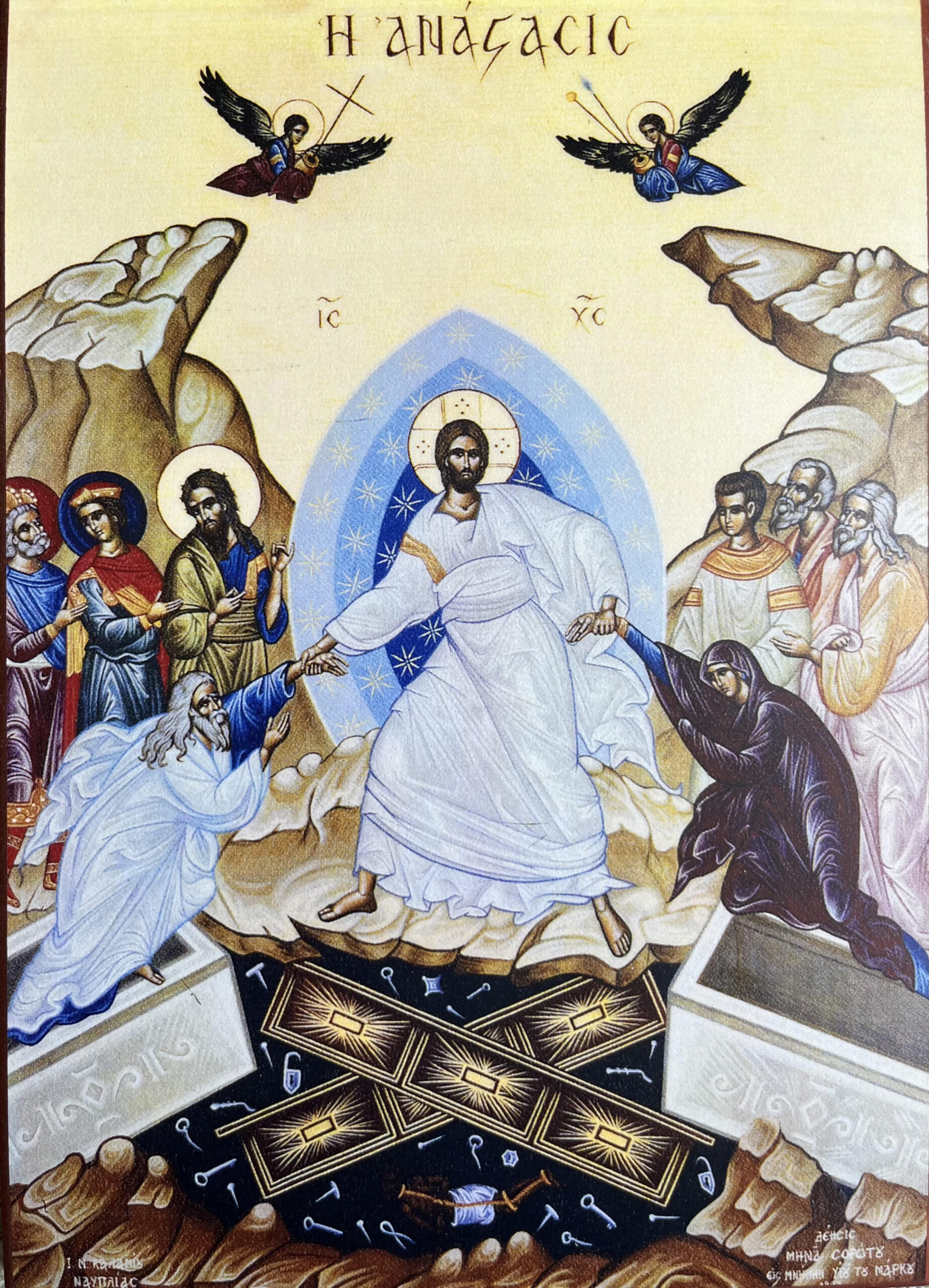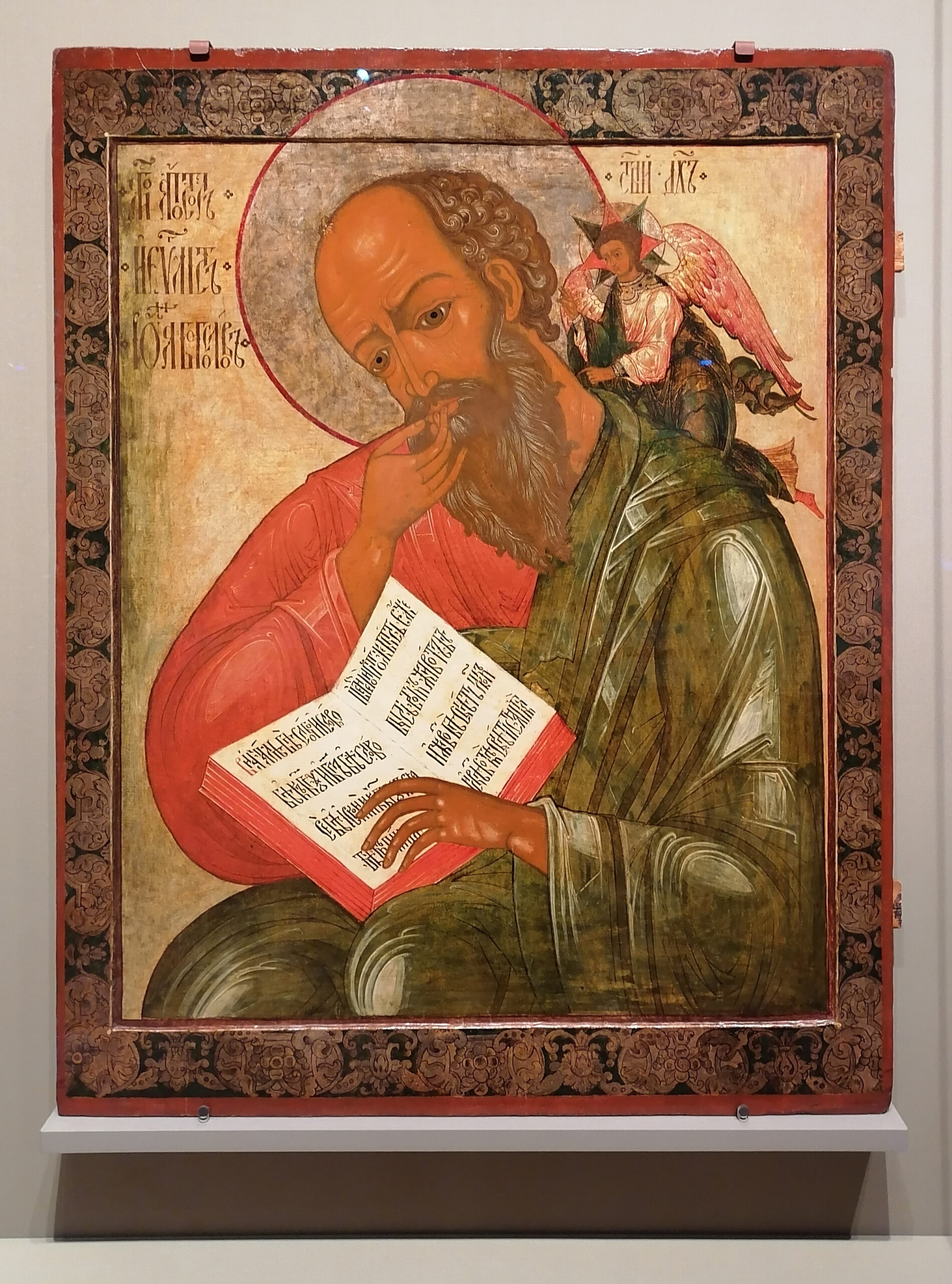The woman who had fallen into many sins, perceiving Your Divinity, O Lord, assumes the role of a myrrh-bearer; and lamenting, she brings the myrrh before Your burial. “Woe to me!” she said, “For me, night is an ecstasy of excess, dark and moonless, and full of sinful desire. Receive the sources of my tears, You, Who gathers into clouds the water of the sea. Incline to the groanings of my heart, You, who in Your ineffable condescension, bowed down the heavens. I will embrace and kiss Your sacred feet, and wipe them again with the tresses of the hair of my head. Your feet, at whose sound Eve hid herself in fear, when she heard Your footsteps while You were walking in Paradise in the twilight. O my Savior and Soul-Saver! Who can ever track down the multitude of my sins, and the depths of Your judgment? Do not disregard me Your servant, Whose mercy is boundless.
~Hymn of Kassiane, Bridegroom Service, Holy Tuesday Evening, Trans. by Fr. George Papadeas
—
And the man and his wife were both, naked, and were not ashamed.
Genesis 2:25
And they heard the sound of the Lord God walking in the garden in the cool of the day, and the man and his wife hid themselves from the presence of the Lord God among the trees of the garden. But the Lord God called to the man, and said to him, “Where are you?” And he said, “I heard the sound of Thee in the garden, and I was afraid, because I was naked; and I hid myself.”
Genesis 3:8-10
We know that in the Orthodox Tradition, icons paint a picture for us of what the people they depict may have looked like. Iconography depicts Jesus as a Middle-Eastern man in His early 30s, because that’s what He was. His skin is a tan color and His hair is dark, as man appears today in the Middle East.
Hymns paint pictures for us with words. While there are not usually icons associated with hymns, as we hear the various hymns, especially during Holy Week, it is with the hope that these hymns will create beautiful and powerful images in our heads. One example is the Hymn of Kassiane.
There are certainly people who think that this hymn is the most important of Holy Week, and many times, choirs obsess with carrying it off perfectly. Certainly, the most important hymn of Holy Week comes at the end, when we sing “Christ is Risen” and that He grants life “to those in the tombs.” We will discuss this at length later in this study, but for now, the beautiful picture painted by the hymn “Christ is risen” is of life after physical death, that those in the tombs will be granted a new and perfect life in the Kingdom of God.
The Hymn of Kassiane also paints a picture of Paradise, going back and reminding us what the first Paradise looked like. It paints a picture of what those who are in the tombs can hope for. And while, in my opinion, the Hymn of Kassiane wouldn’t make my “top ten list of most important Holy Week hymns,” it contains a depth and beauty worthy of reflection and worthy to be sung well.
First, the Hymn of Kassiane tells the story of the harlot (that was discussed in the last reflection) from her perspective. Unlike the Pharisees, whose studies and command of Scripture should have led them to recognize Jesus as the Christ, it was the sinful woman who perceived the divinity of Jesus. She foreshadows the myrrh-bearing women who would anoint His body after the Crucifixion.
The hymn is filled with her sorrow as well as her hope. We hear of her life, that it is an ecstasy of excess, the nights are dark and moonless, and filled with sinful desire. They are not filled with prayer and spirituality, but prostitution and sexual promiscuity. Rather than wallow in her own sense of despair, she sees Christ, and maybe for the first time in her life, she feels hope. She believes that Jesus is the Christ, the Lord, and Savior of all, and as such, He “Who gathers into clouds the water of the sea,” and Who “bowed the heavens” will be able to “receive the sources of” her tears and “incline to the groanings of” her heart.
In humility, she will cry tears of repentance upon the feet of Christ and wipe them with her hair. What a humbling scene this must have been, to see this sinful woman pressing her face into the feet of Jesus, embracing them, crying over them.
The most beautiful image of this hymn is not the image of Eve hiding herself in fear in the garden, but the notion that before the Fall, Adam and Eve were walking with God in Paradise in the twilight. Imagine taking a walk holding the hand of God. Imagine the perfect weather in the perfect place with the perfect God, with a perfect you—no sorrow, or shame, no hunger or fatigue. This sinful woman was not only asking for God’s forgiveness, she was envisioning a complete restoration to wholeness and to perfection. How dare she, or we, dream of such a thing? As we hear in the hymn, “who can ever track down the multitude of my sins, and the depth of Your judgment?” The answer is found in the last words of the hymn, it is the Lord, “Whose mercy is boundless.”
The Hymn of Kassiane then is not just a plea for forgiveness and a pledge of repentance, but a faith and a hope in the mercy of God, who will not only pity us in our offenses of this life, but whose mercy can allow us one day to walk with Him in the twilight of the evening in the garden of Paradise.
Adam and Eve once stood in the presence of God naked. After the Fall, they covered their bodies with garments because their hearts and souls were covered in shame. God made us after His image, as we see in the above scripture. God has no shame and His hope for us is to not have shame either. Christ came to earth to restore the fallen image, to cover the shame of our sin so that we can again stand with confidence and without the fear of condemnation in the presence of God, naked and unashamed.
One more note on this beautiful hymn of Kassiane is that Kassiane, the author of this hymn, was not a harlot. The hymn is not about her, as is often thought. Rather it is her reflection on the transformation of the soul of this harlot depicted in Luke 7: 36-50, as it moves from utter despair to hope and peace. Kasssiane was a nun and hymnographer who lived in the 9th century and is recognized as a saint of our church.
She who was in despair for her life, with her evil ways well known, holding the myrrh, came to You crying out: “You, Who was born of a Virgin, reject me not, the harlot; disregard not my tears, You, Who are the joy of the Angels; but, O Lord, through Your great mercy, receive me in repentance, whom as a sinner, You did not cast out.” (Aposticha, Bridegroom Service, Holy Tuesday Evening, Trans. by Fr. George Papadeas)
As you hear this hymn, allow yourself to dream of what it would have been like to walk in the cool of Paradise hand in hand with the Lord. More importantly, allow yourself to dream what it will be like to do that forever, and use that as motivation to stop living in the moonless night of ecstasy and start living in the joy of our Savior and Soul-saver!

